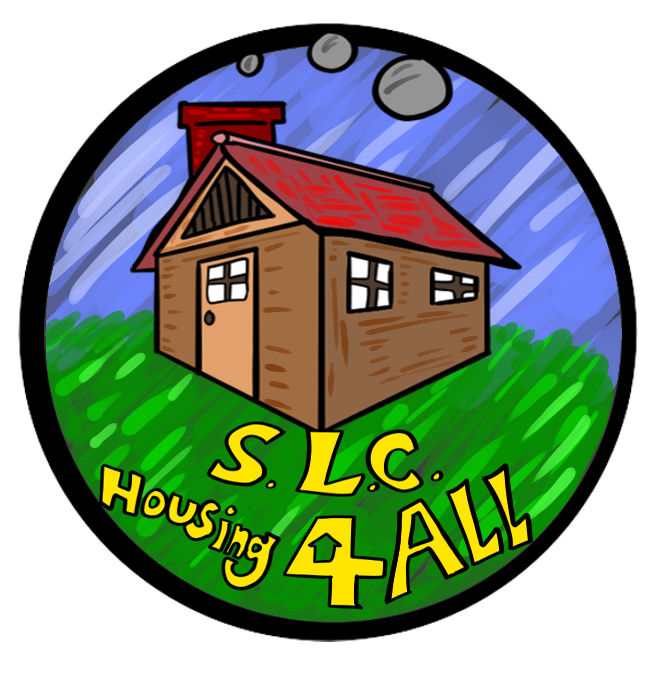How does a public developer overlap with existing housing plans in SLC?
Housing SLC, Salt Lake City’s new five-year housing plan, outlines three goals:
-
Make progress toward closing the housing gap of 5,500 units of deeply affordable housing and increase the supply of housing at all levels of affordability while reducing overall water use and improving air quality.
Metrics:Entitle 10,000 new housing units throughout the city.
Minimum 2,000 units deeply affordable (30% AMI or below)
Minimum 2,000 units affordable (31% - 80% AMI)
Public Developer Impact:
A public developer would help meet Goal 1 because the City would actively develop new housing. All of the housing would be affordable (based on income) and include a mix of incomes.
-
Increase housing stability throughout the city.
Metrics:Track, analyze, and monitor factors that impact housing stability in the city.
Increase programs that provide stability in housing to at least 10,000 low-income individuals annually through housing stability programs funded by the City.
Dedicate targeted funding to:
Mitigate displacement;
Serve renter households;
Serve family households;
Increase geographic equity; and
Increase physical accessibility.
Public Developer Impact:
Social Housing is stable housing because it is affordable and safe. No more rent hikes. No more bad landlords. More social housing units means more housing stability in the community. Social housing also puts funding toward and creates housing for all of the priority populations listed in the goal.
-
Increase opportunities for homeownership and other wealth and equity building opportunities for low to moderate income households.
Metrics:Provide affordable homeownership and wealth and equity building opportunities to 1,000 low-income households.
Public Developer Impact:
A public developer could address Goal 3 by creating opportunities for residents to own their units. Ownership is not the primary goal of a public developer, but it could be included.
-
Increase funding for acquisition, rehabilitation, and development of affordable housing
Support projects that allow tenants to build wealth and/or gain equity in their building based on tenure (while ownership is not the primary goal of a public developer, this could be one arm of the program)
Continue to manage and expand the City’s Community Land Trust (CLT) program (while ownership is not the primary goal of a public developer, this could be one arm of the program)
Work with community development partners to acquire priority properties for permanently affordable housing (the public developer could be considered a community development partner)
Continue to release housing funds through Redevelopment Agency of Salt Lake City (RDA) Notices of Funding Availability (NOFA) for development or acquisition of moderate income housing (the public developer could apply for RDA funding to increase funding pool)
Promote the development of affordable family-sized housing units with 3+ bedrooms
Expand workforce, artist, and essential worker housing, up to 125% AMI, so that these populations can live in the city in which they serve
Public Developer Impact:
A public developer would help support these 7 action items and would probably support other action items as well.
-
Salt Lake City is also working on an anti-displacement strategy, called Thriving in Place (TIP). TIP should be adopted in October 2023 and includes six goals:
Protect tenants from displacement, especially the most vulnerable
Preserve the affordable housing we have
Produce more housing, especially affordable housing
Expand funding for tenant support and affordable housing
Partner and collaborate for maximum impact
Advocate for tenants at the state level.
A public developer could help meet the first four goals by:
Putting landlord-tenant policies into City hands
Buying housing to keep it affordable long-term
Building more housing that is affordable
Increases funding for housing development.
A public developer could make progress on the following action items found in Thriving in Place:
1E. Help tenants become owners
A public developer would help lower rents and help people save for a downpayment. A public developer could also build for-sale, rent-to-own, or shared-equity housing.
2B. Acquisition and Rehabilitation of Existing Housing
A public developer could buy and fix-up housing and turn it into social housing
2C. Community Land Trusts
A public developer could build properties and put them into a community land trust
3C. More diverse housing choices
A public developer could build a variety of housing types and sizes. This would increase housing choice and increase physical accessibility
3D – Utilize Publicly Owned Property
All property owned by a public developer would be public, but using existing public lands would help lower costs
3E – Long-term Affordability, Integrated Services, and Transit Access
A public developer would build housing that is affordable forever. A public developer can also include services, amenities, and transit access
4A – Develop new funding/Leverage existing funding
A public developer would have bonding authority, which would increase funding for housing
A public developer would support both Housing SLC and Thriving in Place. More than just helping accomplish goals in a plan, a public developer would help residents in the area have more stable, more affordable housing.

